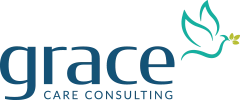Attracting top talent in the healthcare field can be a daunting task. This industry is one that requires excellence, but finding quality talent isn’t always easy. It can be a long, drawn-out, frustrating process that can end in mediocrity if you’re not careful. From labor shortages to the high cost of labor, there are many challenges involved in this process, but with the help of talent acquisition consultants, it can be made seamless.
Due to the overall shortage of available talent in the United States, about 2.3 million new healthcare workers will need to be hired by 2025 to keep up with the shortage due to:
- Aging Baby Boomer population
- Retirement of aging healthcare workforce
- Increase in the number of chronic diseases
- Limited amount of new graduates to fill open positions
Labor shortages, employee burnout that leads to high rates of turnover, and the high cost of labor are just a few of the barriers healthcare organizations face in attracting top talent.
Labor Shortages
Due to insufficient talent available to meet the demand for skilled healthcare workers, this industry is having to deal with extreme labor shortages. Factors that contribute to this shortfall include high-risk working environments, retirement, layoffs, employee burnout, and reduced number of elective procedures.
The most significant shortage involves nurses, and this industry is currently about one million nurses short of demand. But the healthcare workforce in many areas is greatly lacking. Currently, the U.S. needs more than 17,000 additional primary care doctors, 12,000 dental health practitioners, and 8,200 mental health practitioners.
It’s estimated that this country will face a shortage of up to 124,000 physicians by the year 2034 as demand outpaces supply, says the Association of American Medical Colleges.
Cost of Labor
The cost of labor will only continue to rise. Right now, the median hourly rate for all healthcare providers is on its way up. For instance, the hourly rate of a patient care technician rose just 4.5 percent from 2020 to 2021 and rose by 18.5 percent between 2021 and 2022.
Pay rates are also rising for patient-facing and support or admin roles, ranging from nearly seven percent to 14.3 percent increases – all of which are much higher now than in the past. Consequently, these rising costs are getting more difficult to absorb within healthcare budgets.
Burnout
The healthcare industry is no stranger to high burnout rates. It’s been like that for a while, but it’s definitely gotten worse in recent years due to the struggle of consistently meeting patient needs with limited staff.
Burnout is a very real thing, especially among nurses – 95 percent of whom say they feel fatigued even at the start of their shift due to emotionally-challenging environments, inadequate staffing, and excessive workloads. It’s estimated that one third of nurses experience burnout (also known as compassion fatigue), with mental health not being a priority for leaders in the workplace.
Candidate Attraction
Attracting, recruiting, and hiring quality talent is a major challenge for healthcare organizations in all job roles, from medical technicians and front-line workers to doctors and nurses. There are some key trends that impact talent acquisition in healthcare. Here’s how to fix them.
- Address Lack of Resources:
Healthcare organizations need more resources or additional expertise in order to execute stronger talent acquisition protocols.
- Improve Candidate Experience With Better Communication:
Candidate communication and experience still remain pain points for all healthcare organizations. Aptitude Research says one in three candidates don’t hear back from an interview for two weeks or more, with only 21 percent being satisfied with the overall interview process. Addressing communication to improve candidate experiences and drop-off rates is imperative.
- Balance Efficiency and Quality:
It’s a struggle for many organizations to balance efficiency and quality when it comes to patient-centered care. When change is constant, speed and accuracy are vital.
- Leveraging Automation:
Less than half of all healthcare companies say they use automation throughout the lifecycle of talent acquisition. Common areas of investment include recruitment marketing, screening, interviewing, and onboarding. Automation helps healthcare organizations relieve the strain on administrative staff while improving candidate engagement.
- Utilizing Contingent Workers:
A flexible and extended workforce can help healthcare companies fill talent gaps, while reducing costs and improving productivity as they adapt to changing business needs.
In the end, many factors contribute to recruitment challenges in healthcare, from cumbersome screening processes to inability to offer competitive compensation. Having a healthcare recruitment firm on your side is vital to ensuring a strong organization at every level.
Solve Your Talent Acquisition Challenges With Grace Care Consulting.
If you’ve been plagued with the above challenges when it comes to attracting top talent, let us address your pain points and streamline the process. Grace Care Consulting is your source for a dependable network of qualified clinicians and support staff that can meet your needs immediately and accurately. To get started, fill out our online form or call us at (540) 546-2799.

